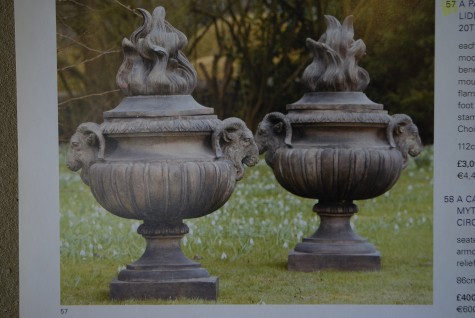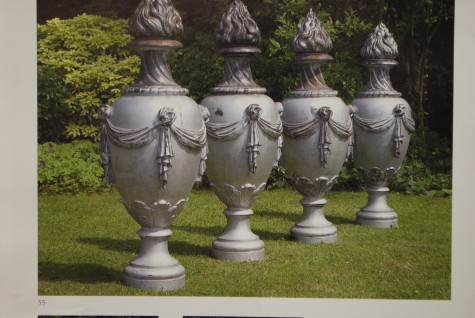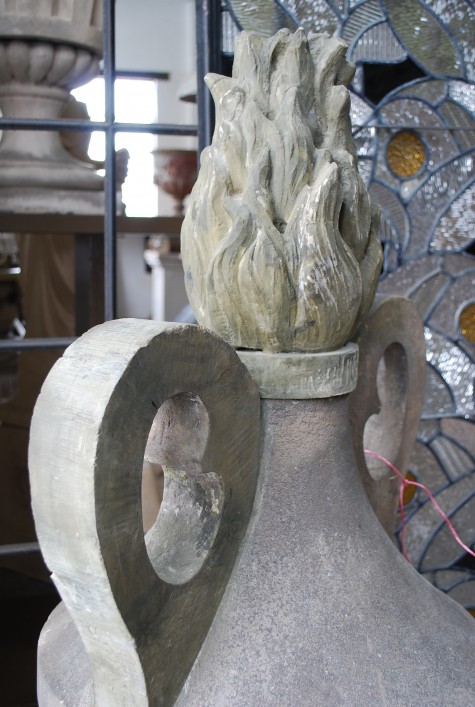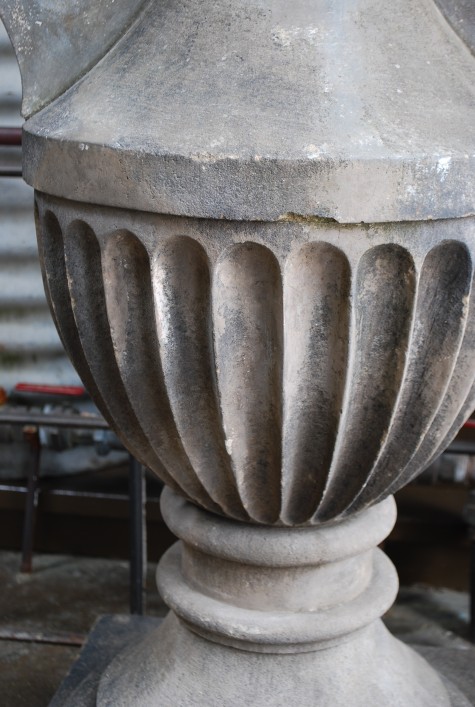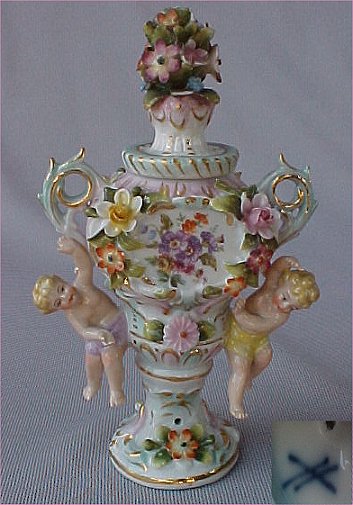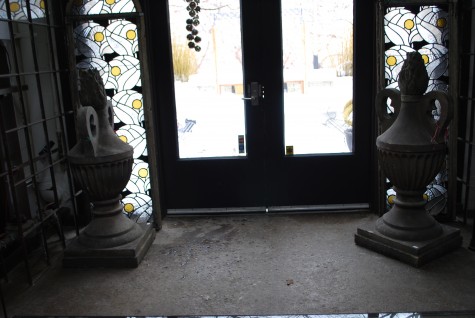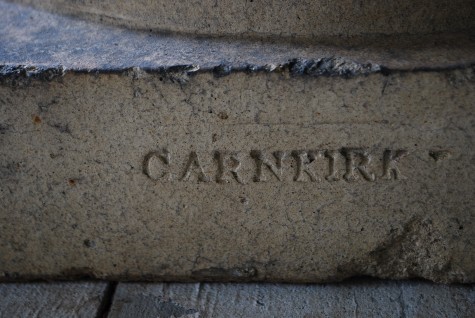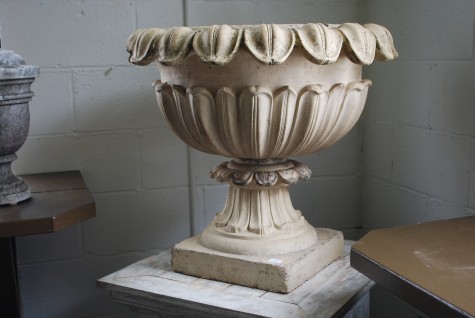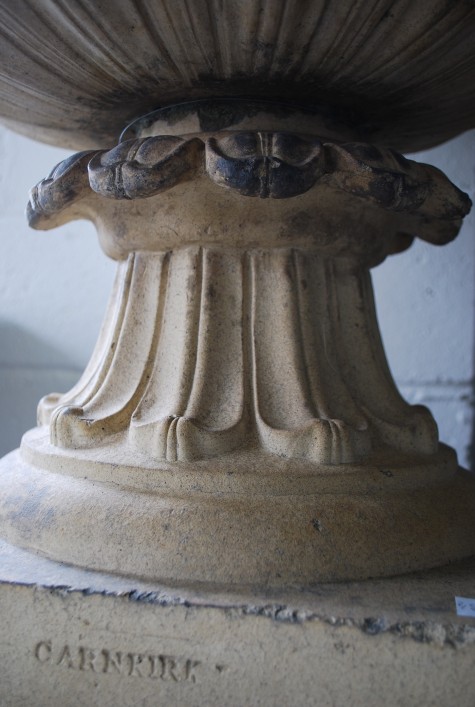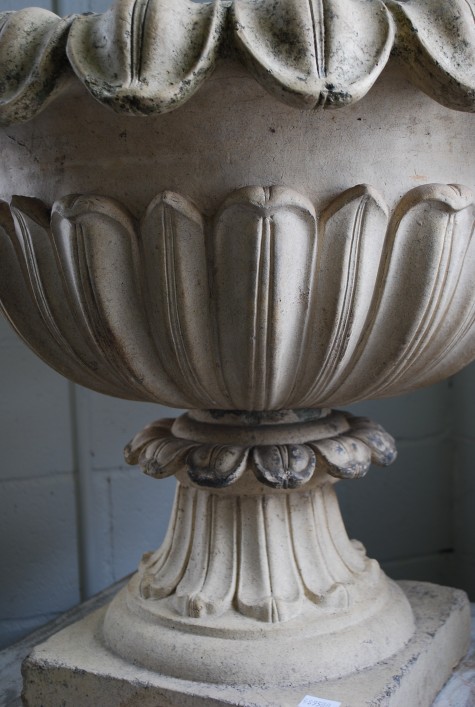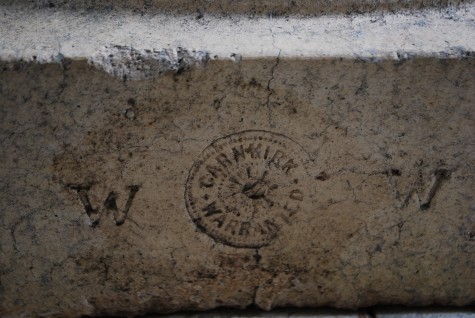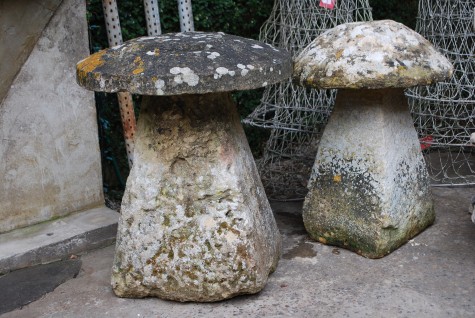 A collection of antique staddle stones arrived in the first container from England. They precisely represent what kind of garden ornament appeals to Rob the most. Any object with great age-that is instantly appealing to him. Add to that an architecturally arresting form and compelling surface-I can bet that object will be in my future. Our collection is modest-7 stones. They are greatly prized by gardeners and collectors of fine garden ornament.
A collection of antique staddle stones arrived in the first container from England. They precisely represent what kind of garden ornament appeals to Rob the most. Any object with great age-that is instantly appealing to him. Add to that an architecturally arresting form and compelling surface-I can bet that object will be in my future. Our collection is modest-7 stones. They are greatly prized by gardeners and collectors of fine garden ornament.
![gazebo_06[1]](https://deborahsilver.com/wp-content/uploads/2011/03/gazebo_061.jpg) Via Wikipedia, staddle stones were used as supporting bases for granaries, hay ricks, and game larders. These words are not part of my native vocabulary-but words of any kind relating to gardening interest me. These stones would elevate any number of structures with different purposes above grade. They would protect a store of grain, hay, or game from water, or vermin infestation. This photograph is courtesy of www.oakgazebo.co.uk; this structure is of of their design and manufacture.�
Via Wikipedia, staddle stones were used as supporting bases for granaries, hay ricks, and game larders. These words are not part of my native vocabulary-but words of any kind relating to gardening interest me. These stones would elevate any number of structures with different purposes above grade. They would protect a store of grain, hay, or game from water, or vermin infestation. This photograph is courtesy of www.oakgazebo.co.uk; this structure is of of their design and manufacture.�
 The origin of the word staddle? In middle English, staddle, or stadle derives from the word stathel, which derives from the the old English word stathol-a foundation, support, or trunk of a tree. I am thinking about the Tolkien novels right now-all of which I have read multiple times. OK, I have my quirks. A disclaimer here. I am not a scholar regarding the history of garden ornament. I am a horticulturist and landscape designer with 15 years of exposure to garden ornament of various kinds. This makes my knowledge of the history of garden ornament anecdotal. Sometimes I am way over my head. But these antique objects do interest me keenly-so I have made an effort to learn something about them. A stone carved to do the job of a trunk of a tree-I am interested in this.
The origin of the word staddle? In middle English, staddle, or stadle derives from the word stathel, which derives from the the old English word stathol-a foundation, support, or trunk of a tree. I am thinking about the Tolkien novels right now-all of which I have read multiple times. OK, I have my quirks. A disclaimer here. I am not a scholar regarding the history of garden ornament. I am a horticulturist and landscape designer with 15 years of exposure to garden ornament of various kinds. This makes my knowledge of the history of garden ornament anecdotal. Sometimes I am way over my head. But these antique objects do interest me keenly-so I have made an effort to learn something about them. A stone carved to do the job of a trunk of a tree-I am interested in this.
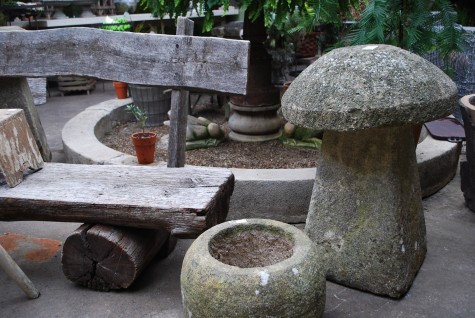 This particular staddle stone may look for all the world like a stone mushroom. Staddle stones placed in landscapes as ornament are actually described as stone mushrooms. But in fact, the domed top made it very difficult for rodents to climb into the granary. The flat top provides sturdy contact between the building, and the stone stilts.
This particular staddle stone may look for all the world like a stone mushroom. Staddle stones placed in landscapes as ornament are actually described as stone mushrooms. But in fact, the domed top made it very difficult for rodents to climb into the granary. The flat top provides sturdy contact between the building, and the stone stilts.
 They are very beautiful objects in their own right. But their shape was dictated by a need. An agricultural need. A cultural need. A way of life need. Nothing interests me more as a landscape designer than the intersection of nature, agriculture, horticulture, and landscape. I have spent a lot of time at that intersection-stop and learn. On the green signal, get going. Yield to oncoming traffic. Turn right on red-only when the coast is clear. Anyone who gardens professionally understands this dance perfectly. Any hands on gardeners understands this even better. These stones were carved from massive blocks of stone in a shape and size dictated by function. The stones are a visual essay in form simply following function.
They are very beautiful objects in their own right. But their shape was dictated by a need. An agricultural need. A cultural need. A way of life need. Nothing interests me more as a landscape designer than the intersection of nature, agriculture, horticulture, and landscape. I have spent a lot of time at that intersection-stop and learn. On the green signal, get going. Yield to oncoming traffic. Turn right on red-only when the coast is clear. Anyone who gardens professionally understands this dance perfectly. Any hands on gardeners understands this even better. These stones were carved from massive blocks of stone in a shape and size dictated by function. The stones are a visual essay in form simply following function.
 This photograph came from www.geograph.org.uk. It is a “web based project to collect and reference geographically representative images of every square kilometre of the British Isles”. What an ambitious project, and what a pleasure to be able to see such a structure. The brick building pictured above is held aloft by 9 staddle stones-so beautiful. Any building lifted off the ground by staddle stones-there is no small amount of calculation involved in determining how many staddle stones it takes to raise a building bearing weight above grade. A considerable requirement of stones for even a small structure meant a thriving local business for staddle stone carvers. The upper Hexford granary in Oxfordshire exists above grade courtesy of 36 staddle stones.
This photograph came from www.geograph.org.uk. It is a “web based project to collect and reference geographically representative images of every square kilometre of the British Isles”. What an ambitious project, and what a pleasure to be able to see such a structure. The brick building pictured above is held aloft by 9 staddle stones-so beautiful. Any building lifted off the ground by staddle stones-there is no small amount of calculation involved in determining how many staddle stones it takes to raise a building bearing weight above grade. A considerable requirement of stones for even a small structure meant a thriving local business for staddle stone carvers. The upper Hexford granary in Oxfordshire exists above grade courtesy of 36 staddle stones.
 Many of these stones are well over a century old. They are shaped from single blocks of stone. The individual shapes vary-there is always the evidence of the human hand. Our collection by and large was at some time carved from Cotswold stone.
Many of these stones are well over a century old. They are shaped from single blocks of stone. The individual shapes vary-there is always the evidence of the human hand. Our collection by and large was at some time carved from Cotswold stone.
 This photograph Rob sent me from England-compelling. These mushroom stones are truly mysterious and organic in shape-beautiful.
This photograph Rob sent me from England-compelling. These mushroom stones are truly mysterious and organic in shape-beautiful.
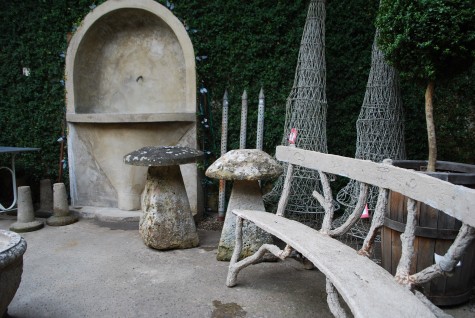
The antique staddle stones seem quite at home in the shop. They are breathtakingly beautiful-the historic use, the shapes, the surfaces, the color of the various stones,the lichens. They, among other things, make me so glad I decided to be a gardener.
